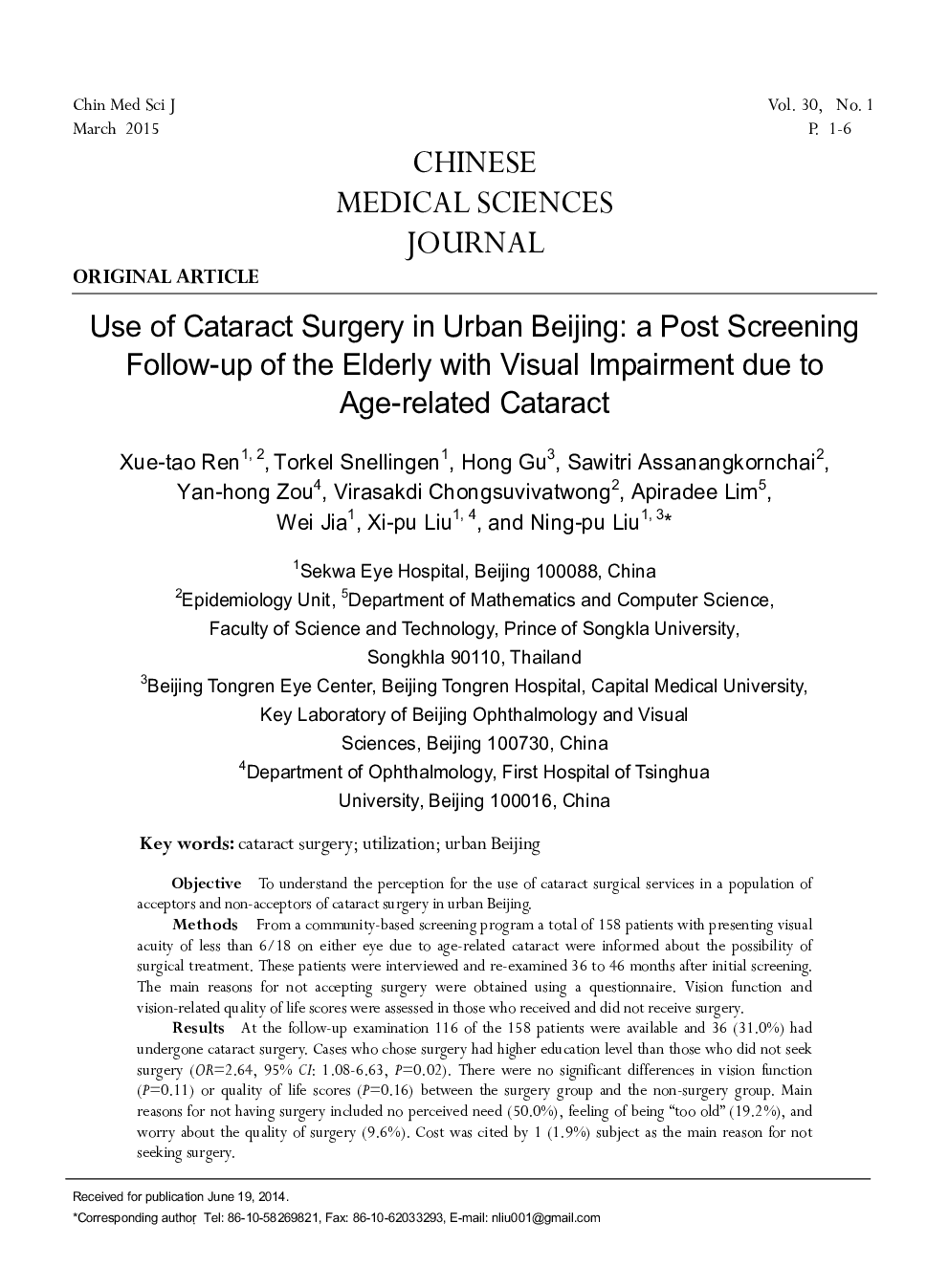| کد مقاله | کد نشریه | سال انتشار | مقاله انگلیسی | نسخه تمام متن |
|---|---|---|---|---|
| 3459438 | 1231166 | 2015 | 6 صفحه PDF | دانلود رایگان |
ObjectiveTo understand the perception for the use of cataract surgical services in a population of acceptors and non-acceptors of cataract surgery in urban Beijing.MethodsFrom a community-based screening program a total of 158 patients with presenting visual acuity of less than 6/18 on either eye due to age-related cataract were informed about the possibility of surgical treatment. These patients were interviewed and re-examined 36 to 46 months after initial screening. The main reasons for not accepting surgery were obtained using a questionnaire. Vision function and vision-related quality of life scores were assessed in those who received and did not receive surgery.ResultsAt the follow-up examination 116 of the 158 patients were available and 36 (31.0%) had undergone cataract surgery. Cases who chose surgery had higher education level than those who did not seek surgery (OR=2.64, 95% CI: 1.08-6.63, P=0.02). There were no significant differences in vision function (P=0.11) or quality of life scores (P=0.16) between the surgery group and the non-surgery group. Main reasons for not having surgery included no perceived need (50.0%), feeling of being “too old” (19.2%), and worry about the quality of surgery (9.6%). Cost was cited by 1 (1.9%) subject as the main reason for not seeking surgery.ConclusionsThe data suggest that in China's capital urban center for patients with moderate visual impairment there is a relative low acceptance rate of cataract surgery, mainly due to people's perception of marginal benefits of surgery. Cost is not a determining factor as barrier to undergo surgery and patients with poorer education are less likely to undertake surgery.
Journal: Chinese Medical Sciences Journal - Volume 30, Issue 1, March 2015, Pages 1-6
